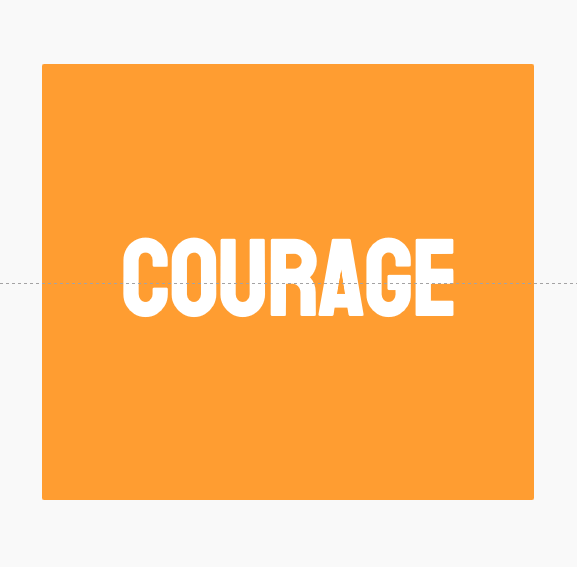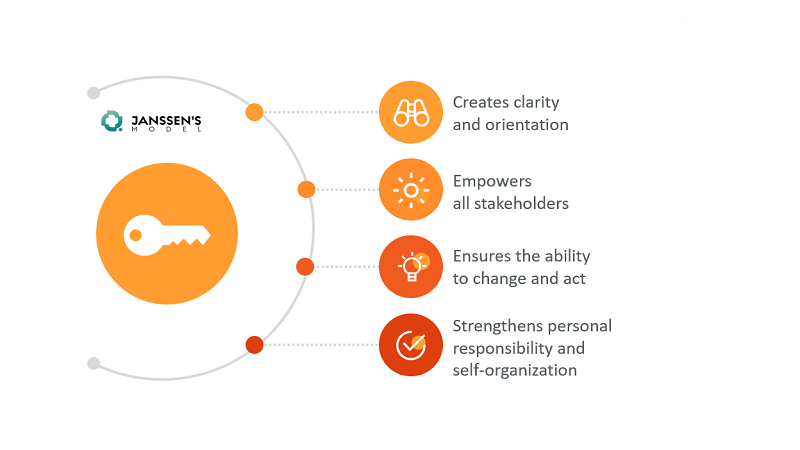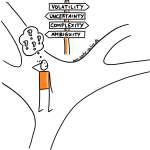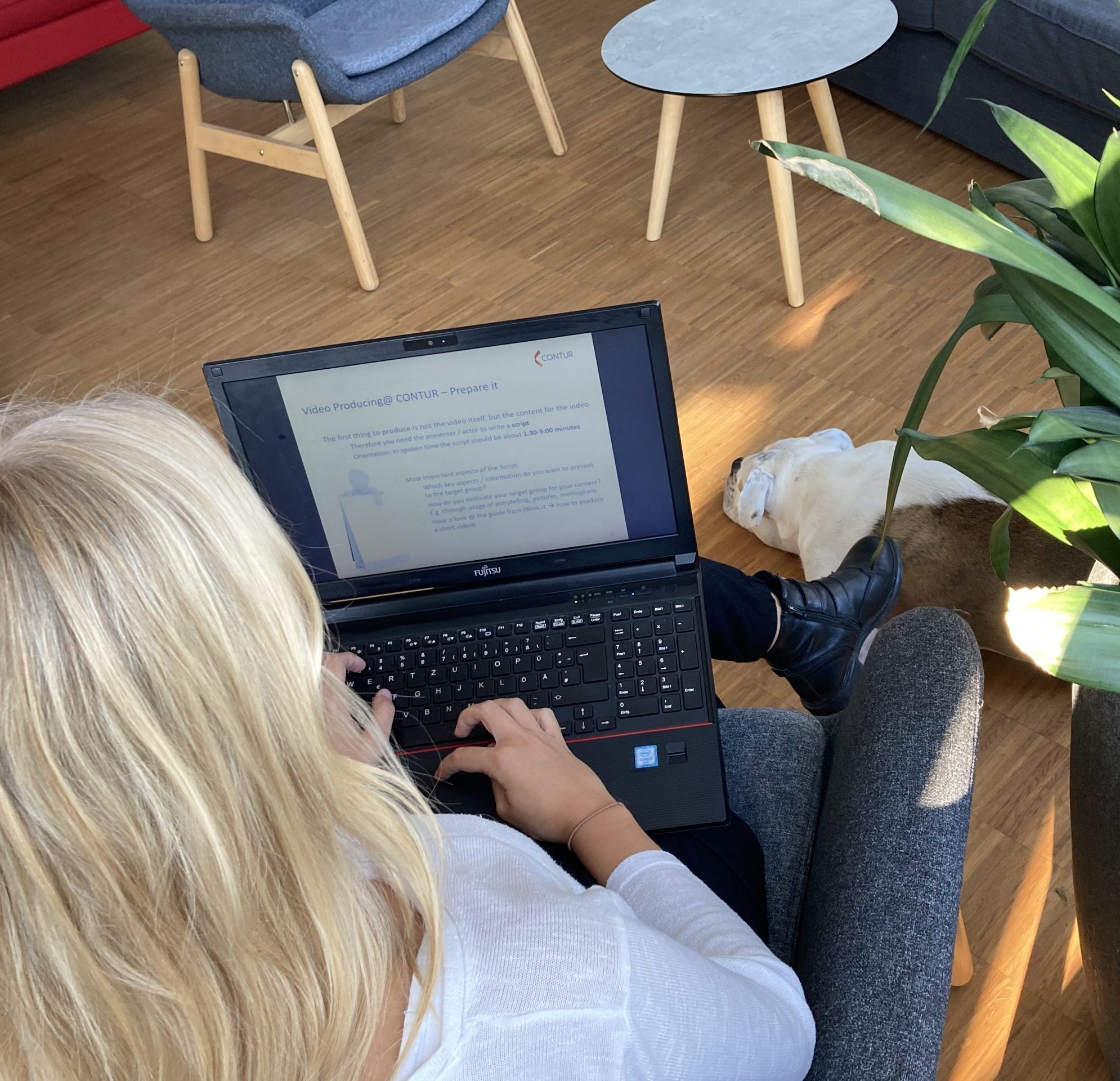Changing
leadership cultures
But how can we do that?


Many companies have courage as a core value. And for good reason. We are all aware of the challenges that many companies and we as a society are facing. It is becoming increasingly urgent to abandon ways of doing things that have made sense in the past.
But doing something new, fostering innovation, and implementing changed leadership cultures definitely involves risk and requires courage: as an individual, as a team, as an organization, and as a society.
What creates a more courageous leadership culture?
In the companies where I worked for many years, we also had courage as a corporate value. As a human resources manager, I wanted to bring the company’s values into everyday life and contribute to a good and inspiring working environment.
We took a number of steps to create a culture of trust characterized by openness and constructive interaction. From workshops to create a common understanding of what we mean in everyday life and what behaviors are conducive to this, to employee surveys, 360-degree feedback processes, and change agent programs. The many “dialogue-oriented” exchange formats have certainly contributed to the development of a more trusting and open corporate culture.
But have we, as an organization, become more courageous? Or did it depend on the individual actors and their leadership styles?
Systematic development of courage
From the German book “Courageously on! Your Path to Good Work and Strong Leadership.” by Florence Marie Guesnet, I generated two insights.
Courage can be developed. And: Courage is overcoming fear and doubt.
This inspired me, as a convinced (and certified) user of Claes Janssen’s Four Rooms of Change, to use this helpful approach to work on a more systematic development of courage in organizations.
The use of Four Rooms is valuable from two perspectives: first, to develop courage as an individual, and second, as an organization.
Often we are left with appeals: “We need to be more courageous”, but the “How do we do that?
In order to make this more manageable, transparent and above all “measurable”, the Four Rooms approach offers a helpful package of theories, models and tools.
Four Rooms of Change
by Claes Janssen
Claes Janssen’s Four Rooms describe that we as humans are in an emotional state depending on the situation. Claes Janssen has developed the four rooms empirically and describes them as “States of Mind”. These four rooms are contentment, censorship (denial), confusion and inspiration.
Furthermore, the theory describes how we move through the rooms – in the exact order they were just described. From contentment to censorship, confusion to inspiration and contentment. There are no shortcuts.
So when we are in the room of contentment or inspiration, there is no need for change or courage. When we are in a private situation, for example when everything is going well, we don’t need courage – only when there is a crisis.
The moment when we don’t want to admit it, but we already feel that something is wrong.
We need courage to face it. And it takes courage to step into uncertainty, into the unknown, and that is scary. It takes courage to make choices.
Courage in a professional environment
This is also necessary in a professional environment. If we are in a meeting where there is a constructive climate, where we feel comfortable and safe, where everyone can speak openly and no one is exposed, then courage is not necessary.
In situations where we feel uncomfortable, where we perceive something as unfair and offensive, or where decisions are made in a non-transparent way – then we need courage.
The Four Rooms help to locate oneself, or assist others in recognizing where they are, and assist in the journey back to inspiration or contentment.
As individuals, we are constantly moving through the Four Rooms, and if we can keep the doors open, we strengthen our ability to change, deal with fear and doubt, and become more courageous. Different strengths – but different challenges.

The path to a courageous organization
From the Four Rooms perspective, the way to become a courageous organization is to create structures, processes, and a leadership culture that allow many people to be in the rooms of contentment and inspiration.
- The room of contentment from an organizational perspective is characterized by the fact that people feel safe and recognized and can thus also contribute their potential. Indicators are efficiency and productivity.
- In the room of inspiration, positive energy is perceptible; it is noticeable that ideas are contributed and that the view is also directed outward. Constructive critical questioning takes place, a positive team spirit is noticeable and courage is also visible as challenges are tackled.
- The rooms contentment and inspiration strengthen each other and if many in the organization or in the team are in these rooms, decisions are made more courageously, changes are implemented and new things are tried out.
Indicators of insecure leadership cultures
The rooms of denial (censorship) and confusion also reinforce each other, but unfortunately with negative effects. Leadership cultures are created in which opinions are not openly expressed, and fear and uncertainty prevail. And typical characteristics of the room of confusion are insecurity, disorientation, frustration – also recognizable in absenteeism and a high fluctuation rate. Now courageous action is needed to change things.
There are a number of indicators for each room. From a leadership perspective, these help to assess a team or an organization. But to determine this together and from different perspectives with the involvement of managers and employees creates a strengthening of the willingness or ability to change and requires: COURAGE. Tackling the issues that drive employees into censorship or confusion. From Four Rooms’ point of view, this can only be done with the participation of all people concerned.
Where do employees and teams stand:
The online “Pulse Monitor”
Courage and the ability to change are also necessary in our own organization, CONTUR GmbH. The environment, competition, digitalization and last but not least the pandemic have changed our business environment. It was and is important to us to offer a working environment that is satisfying and inspiring. In a small organization, bold action is required almost daily in all areas to stay agile and fast.
We use an online ” Pulse Monitor” with a total of 40 questions to find out where we stand. All employees work with their direct supervisors to find solutions to keep themselves and as a team satisfied and inspired, and to remove obstacles that lead to censorship or confusion.
This is an ongoing process. To keep at it, we have included this approach in our objectives as part of sustainability and we conduct the pulse check, initiated by the team leaders themselves, twice a year. This shows that we are serious about creating a good and inspiring working environment. And we strengthen personal responsibility and the ability to organize oneself and make a courageous culture tangible in everyday life.
The Pulse Monitor: Instrument and Involving Process

How can courageous action be measured?
Courageous action depends on many influencing factors: the management culture, the framework conditions and, of course, the various personalities. The results of courageous action are visible and tangible – decisions are made more quickly, new things are tried out, and “no” is clearly said sometimes. These are all visible results, but they are difficult to measure directly in causal terms.
What is measurable, however, is the extent to which the conditions for courageous action are in place. An analogy to gardening makes it clear: the condition of the soil can be analyzed and one can create the conditions for a good harvest. And this is how the pulse meter works. One can determine what spaces individuals are in and where there is a need for action in terms of clarity, goal setting and infrastructure. Working on this allows for a positive environment that conveys security.
CONCLUSION: In retrospect, the concept and tools of Janssen’s Model®: Four Rooms would have been very helpful to me in working on a new leadership culture and in implementing the corporate value “courage” in previous HR roles, in order to give managers pragmatic and action-oriented “tools” to work with – which incidentally also strengthens their personal ability to change.
The interview partner
Dr. Angelika Schrand is the managing director of CONTUR. With her extensive HR and change management expertise from activities in various industries and company sizes, the topic of change and sustainability management is of particular importance to her. In other words, topics that always require a lot of courage!

The interview partner
Dr. Angelika Schrand is the managing director of CONTUR. With her extensive HR and change management expertise from activities in various industries and company sizes, the topic of change and sustainability management is of particular importance to her. In other words, topics that always require a lot of courage!







